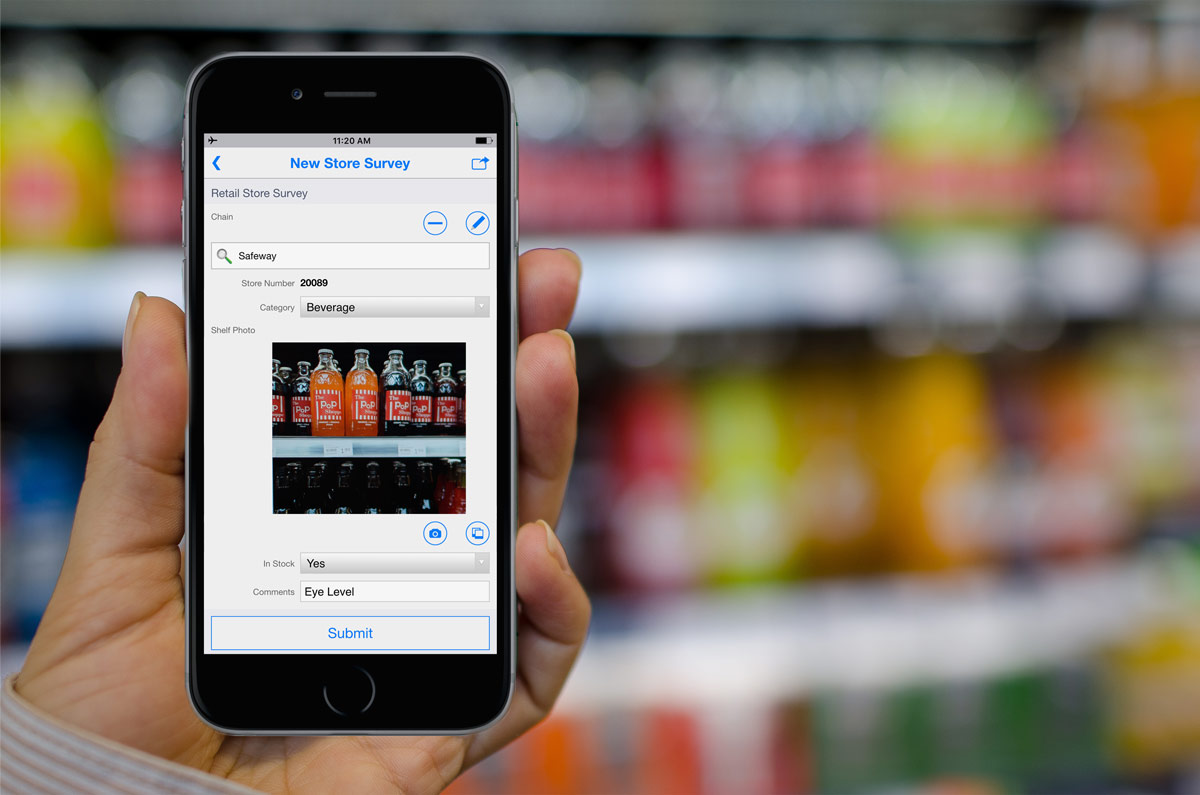Top 6 Ways to Improve Retail Execution Management

Reduce out of stocks, increase sales.
Many consumer goods manufacturers don't have enough visibility into whether their products are displayed correctly and present on shelves, or how well their carefully planned promotions are executed in retail stores. Out-of-stocks alone continue to cost the consumer goods industry billions of dollars every year.
But why is this still the case? Without physically being in stores at all times, it's difficult or costly to measure what's actually happening at the shelf. It's even more challenging to monitor in-store conditions in a systematic and actionable way, to be able to feed the information back to brokers and retailers and increase sales.
Here are some of the retail execution challenges that CPG companies continue to face:
- Delays in getting information from the field
- Expensive third-party services to provide this information
- Inconsistent retail audit processes between chains or territories
- High fuel and staffing costs
- Using paper, email or spreadsheets to document shelf conditions
- Ad-hoc or inefficient methods of conducting in-store surveys
Often, there is a visibility gap between the loading dock and checkout counter. If products are not available, visible, and presentable to shoppers where they make their buying decisions, resulting in lost revenue.
Fortunately mobile technology is changing the game, making retail execution management, including in-store surveys and reporting and following up on the data, more accessible and cost-efficient than ever before.
Here are 6 ways to close the retail execution gap with a mobile solution.
1. Reduce the cost of in-store surveys
Use a flexible mobile forms builder to quickly create retail store survey forms that work offline, and deliver real-time data to a centralized database. Reduce the costs associated with printing and distributing paper survey forms, or analyzing data in spreadsheets.
2. Expand retail survey coverage
With a streamlined mobile data collection system, you can survey more stores more often, across more channels. By improving the productivity of every rep in the field, more in-store data can be collected. Automate reporting and use BI dashboards to identify trends by region, retailer, special promotion, product, or other criteria.
3. Address in-store issues quickly
Set up workflows and automatic notifications for issues needing immediate attention such as out-of-stocks or low scores for a store. Send audit reports automatically from the mobile app to managers and brokers. Close the loop by defining and tracking action plans for urgent issues, all within the same system.
4. Improve the accountability of field teams
Collect rich information in mobile forms such as time-stamped photos, GPS locations, manager signatures and more to improve employee accountability. Capture start and end times of each retail store visit to ensure productivity is maximized.
5. Close the loop with brokers
An indisputable audit trail of in-store conditions goes a long way when managing the performance of brokers. By checking and reporting on retail conditions regularly, you can identify any systematic issues and correct them. Send out automated reports from mobile devices in the field to streamline communication.
6. Use rapid mobile app development for quick, cost-effective deployments
Leverage an agile, no-code solution for building and publishing apps to get results faster. With no-code tools, you can constantly tweak and make changes to your retail execution apps and instantly publish the changes for all users.
Learn how to make the most out of in-store visits with fully customized apps that improve retail execution processes.